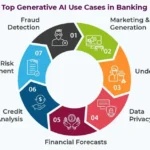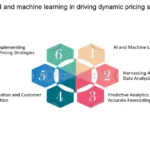In the ever-evolving world of marketing, staying ahead of the curve is crucial. As technology continues to shape the landscape, businesses must adapt and embrace innovative solutions to connect with their target audiences more effectively. Generative AI has the potential to revolutionize the way we approach audience segmentation, personalization, and content creation. Unlike traditional AI models that rely on pre-existing data, Generative AI has the capability to create entirely new and unique outputs, such as text, images, audio, and even code. This opens up a world of possibilities for marketers seeking to craft highly personalized and engaging content tailored to their specific target audiences.
Traditionally, businesses have relied on historical sales data, supplier lead times, and experienced-based forecasting to determine inventory levels. However, this rear-view mirror approach fails to account for the many shifting variables that can impact inventory needs like consumer trends, seasonal patterns, promotions, and external events.
This is where predictive analytics can be a game-changer for inventory management. Predictive models analyze current data – sales figures, market forecasts, weather patterns, and more – to detect patterns and forecast future inventory demands. With machine learning, these models can get smarter over time, automatically adjusting to changing conditions.
Here are some ways predictive analytics transforms inventory management:
Demand Forecasting Historical data provides some visibility into future demands, but predictive models can find deeper insights from multiple data sources. In addition to past orders, it can factor in economic conditions, competitor activity, social media signals, and other demand influencers. The result is a more accurate forecast of what products will be needed and when.
Early Warning for Stockouts Predictive models can identify the leading indicators that a product is about to go out of stock, like a spike in orders or a supply chain delay. This allows you to take steps to get additional inventory or offer substitutions before running out completely.
Optimized Safety Stock By combining audience segmentation, personalization, and dynamic content creation, Generative AI empowers businesses to deliver truly personalized customer experiences. Imagine a scenario where a customer visits an e-commerce website, and the site’s Generative AI system analyzes their browsing behavior, purchase history, and preferences to generate a tailored product recommendation, complete with a personalized marketing message and visuals.
Reduced Inventory Costs This level of personalization not only enhances the customer experience but also increases the likelihood of conversions and customer loyalty.
Smarter Inventory Allocation For businesses with multiple locations, predictive analytics can model demand at each site and automatically re-allocate inventory across the network based on need. This ensures high-demand locations don’t go out of stock while preventing overstocking in low-turnover areas.
Inventory management has always been an exercise in calculated guesswork based on past data. But predictive analytics is allowing businesses to bring much more certainty to the process. By finding the signal in the noise of all available data sources, predictive models can accurately forecast future inventory needs and drive more profitable, customer-centric inventory strategies.





